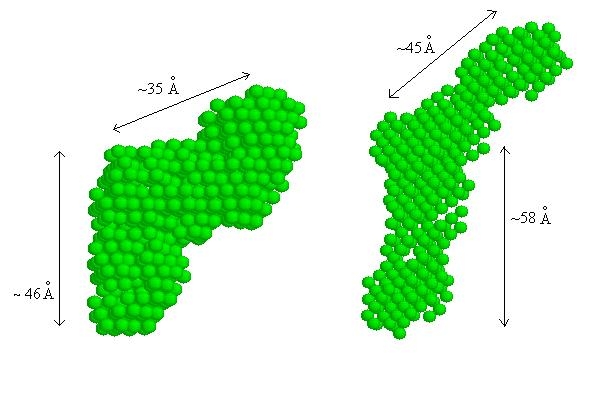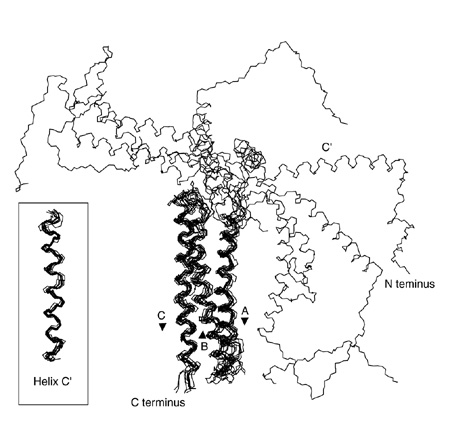We study a family of proteins – the spectrin isoforms. Spectrin, a major protein in the membrane skeleton or cytoskeleton, is believed to have evolved early in the development of metazoans, following divergence of fungi, plants and vertebrates, with each isoform representing a candidate for roles in specialized activities of multicellular animals.
The high degree of sequence homology amongst different spectrin isoforms suggests similar structures and similar functions for these isoforms. Yet, at least two of the better studied isoforms, erythroid and brain spectrins, exhibit quite different affinities in subunit interactions to form tetramers, which is the functional form for spectrin. The differences in affinities are probably due to small differences in conformation, or large differences in conformation of small areas (i.e. specific residue-residue pairing, kinetic differences in association, etc.). We are using various biophysical methods and recombinant model peptides of spectrin fragments to study differences in critical regions of brain and erythroid spectrin isoforms. The methods include cysteine scanning for spin or fluorescent labeling, as well as high resolution NMR and X-ray studies. Our broad, long-term objectives are to understand conformations of critical regions in various spectrin isoforms and to correlate specific structural features in these isoforms with functions unique to individual isoforms. Findings from these studies will provide insight toward developing molecular understanding of normal physiology involving spectrin molecules in erythrocytes, brain cells and other types of cells, and of diseases related to spectrin tetramers, such as hereditary hemolytic anemia blood diseases, and neurological disorders (e.g., many Alzheimer patients have elevated antibodies toward brain spectrin fragments).
These studies not only provide information on two important spectrin isoforms, but may also serve as examples for other highly homologous proteins with similar general folding patterns, that exhibit small conformational variations to provide functional differences.
We believe that disease markers and drug targets can be identified through functional proteomic studies of spectrin isoforms and their protein-protein interactions.


 Fung Lab
Fung Lab